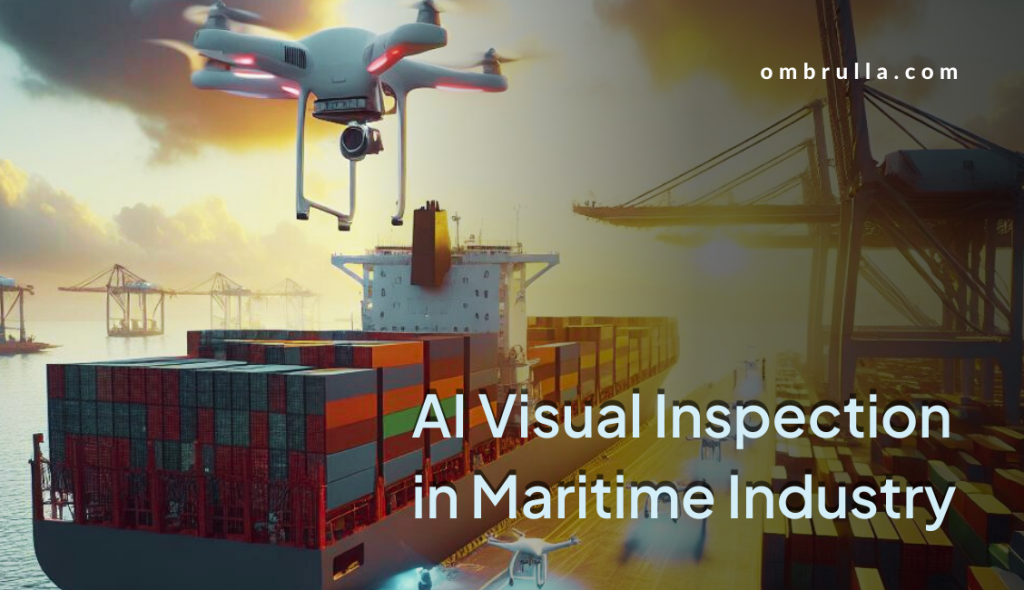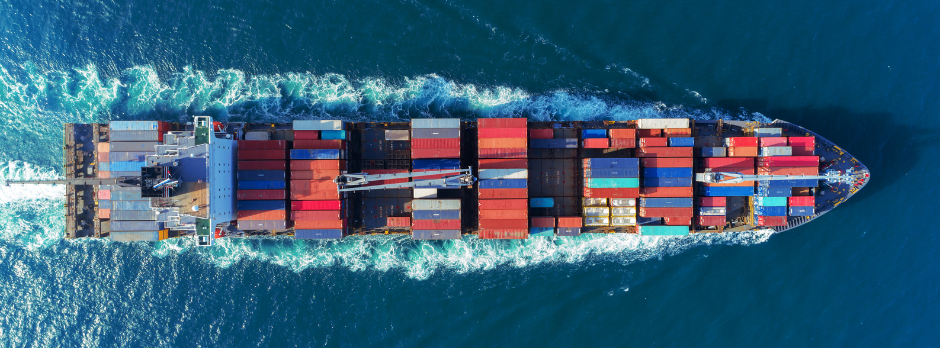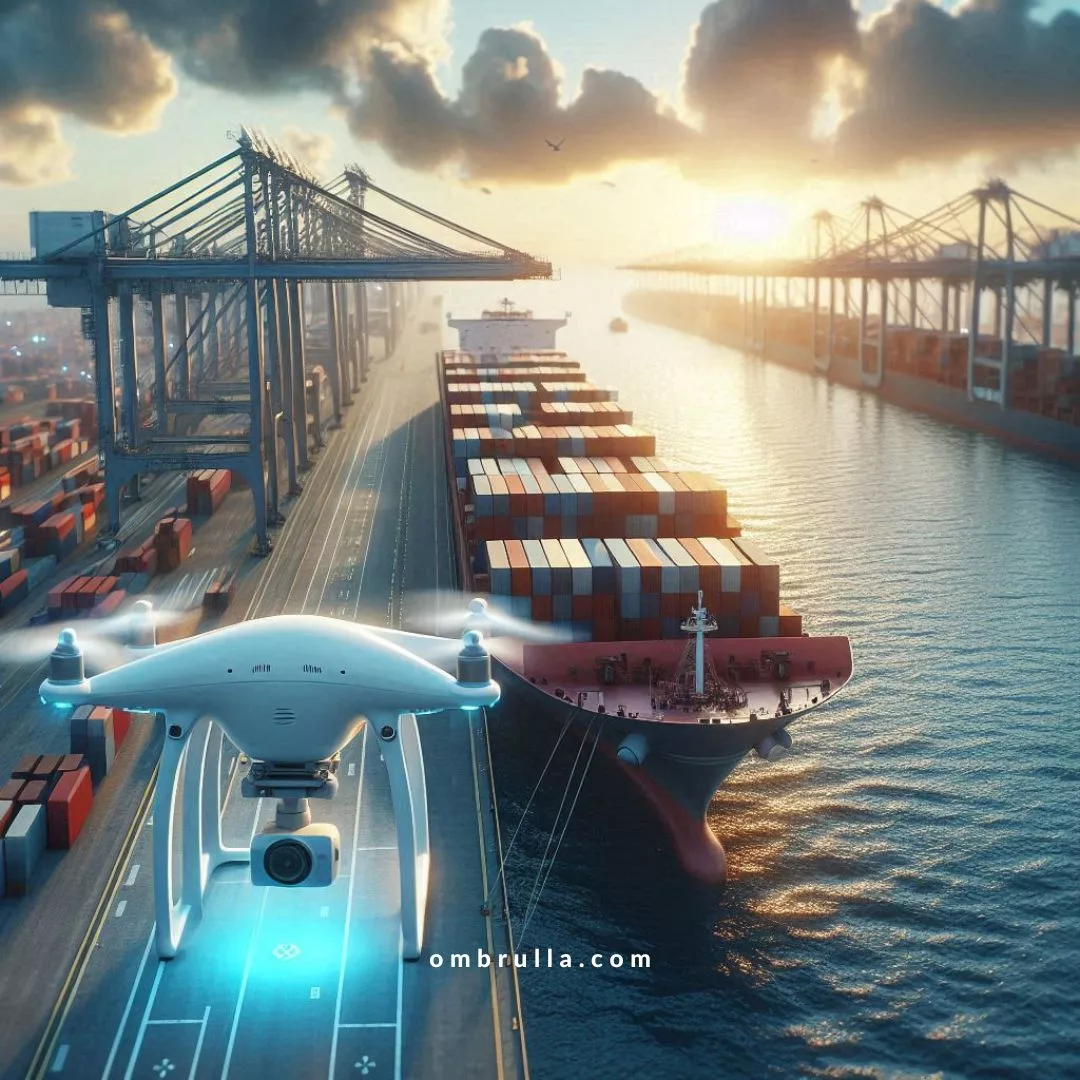
In maritime operations, the dual goals of cost reduction and safety enhancement persistently challenge industry stakeholders. As technology evolves, AI visual inspection and defect detection methods emerge as transformative tools. These advancements are reshaping traditional class and asset management strategies.
Transitioning from conventional approaches, maritime organizations are embracing AI visual inspection solutions for improved efficiency, quality control and safety.
By leveraging AI defect detection and remote inspection techniques, maritime operators optimize operational processes. This optimization not only reduces costs but also enhances safety measures. The convergence of technology and collaborative efforts promises a new era of quality control and safety in maritime operations.
Applying AI Visual Inspection
- Acquiring Image Dataset:
- To commence, gather various images displaying corrosion and coating breakdown.
- These images form the foundation for training the computer vision models.
- They offer diverse examples, aiding in comprehensive learning.
- This initial step is crucial for ensuring the effectiveness of the Artificial Intelligence or machine vision tool.
- AI Model Training:
- Moving forward, utilize machine learning algorithms to train the Artificial Intelligence models.
- These algorithms assist the AI in recognizing patterns indicative of corrosion and coating deterioration.
- Through iterative refinement, the model’s accuracy gradually improves.
- Exposure to different image examples enhances the model’s ability to identify issues precisely.
- Deployment for Inspection:
- Subsequently, once the AI model is adequately trained, deploy it for real-time inspections.
- The Artificial Intelligence or machine vision tool swiftly analyzes images captured by cameras or drones during inspections.
- It promptly identifies areas of concern, such as corrosion or coating damage.
- This facilitates timely detection and intervention, thereby enhancing overall safety and efficiency.
- Trend Analysis and Maintenance Planning:
- Lastly, leverage machine learning to track and analyze images over time.
- This analysis enables the identification of trends in corrosion and coating breakdown.
- With this data-driven insight, proactive maintenance planning becomes feasible.
- Decision-making can be based on predictive analytics, optimizing asset management and reducing operational risks.

Contact Us for Free Demo
Benefits of AI Visual Inspections:
Safety Enhancement:
- By reducing physical attendance, AI defect detection mitigate safety risks, enhancing overall workplace safety and quality cont.
- Alternative inspection methods and tools decrease reliance on personnel, thereby minimizing exposure to hazardous environments.
- Consequently, this approach promotes a safer working environment, safeguarding personnel involved in maritime operations.
- Ultimately, it fosters a culture of safety by reducing direct exposure to potentially dangerous conditions.
Accuracy Improvement:
- AI-driven defect detection provide reliable and consistent assessments, ensuring data integrity and accuracy.
- Machine learning algorithms meticulously analyze data, guaranteeing objective and unbiased evaluations.
- This eliminates human error and subjectivity, enhancing the reliability of inspection results and optimize quality control.
- Consequently, stakeholders can make informed decisions confidently based on accurate asset condition assessments.
Efficiency Boost:
- AI-driven defect detection streamline the inspection process, resulting in expedited visual evaluations.
- Automation reduces the time required for inspections, minimizing operational disruptions and downtime.
- With real-time analysis and immediate feedback, corrective actions can be promptly implemented.
- Overall, the efficiency gains translate to optimized workflows and cost savings for maritime operators.
Remote Inspection & Machine Vision Technologies:
The Role of Drones, Crawlers, and Remotely Operated Underwater Vehicles (ROVs) in Gathering Visual Inspection Data:

- In maritime settings, drones, crawlers, and ROVs are integral for gathering machine vision data.
- Drones provide aerial views, while crawlers navigate confined spaces, and ROVs explore underwater structures.
- Consequently, these technologies facilitate inspections in challenging or hazardous areas, significantly enhancing safety protocols.
- Moreover, by capturing high-resolution images and videos, they furnish comprehensive data crucial for analysis.
Utilizing Computer Vision for Automatic Assessment:
- Machine learning algorithms revolutionize assessment procedures by automating tasks and boosting efficiency.
- These algorithms adeptly identify and segment defects such as coating failures, corrosion, and structural damage.
- Through thorough analysis of visual data, machine learning models effectively categorize and prioritize identified defects.
- As a result, this automatic assessment process optimizes inspection workflows, enabling timely interventions and strategic maintenance planning.
Artificial Intelligence vs. Human Expertise
- Artificial Intelligence and human expertise each offer distinct advantages in various contexts.
- AI excels in processing large volumes of data rapidly and objectively.
- Conversely, human experts bring intuition and contextual understanding to decision-making processes.
- While AI Visual Inspection provides consistency and scalability in quality control, human expertise offers adaptability and creativity.
- Therefore, the synergy between AI and human expertise can yield optimal outcomes.
- In certain tasks, AI surpasses human capabilities due to its computational prowess.
- AI algorithms can analyze complex datasets with speed and precision, uncovering patterns efficiently.
- However, human expertise remains invaluable in interpreting nuanced information and making contextual judgments.
- Combining AI’s analytical power with human intuition can lead to more insightful and informed decisions.
- Nonetheless, there are areas where human expertise remains irreplaceable.
- Humans possess emotional intelligence, empathy, and ethical reasoning, which are essential in certain domains.
- For instance, in customer service or healthcare, human interaction and understanding are critical components.
- While AI can automate repetitive tasks, human empathy and creativity foster meaningful connections and innovative solutions.
- Ultimately, the integration of Artificial Intelligence and human expertise represents the future of problem-solving.
- By leveraging AI’s computational capabilities and human expertise’s contextual understanding, organizations can achieve unparalleled results.
- Collaboration between AI Visual Inspection or Machine Vision systems and human experts enables the best of both worlds.
- Thus, embracing this symbiotic relationship leads to advancements across various fields and industries.
Conclusion
In summary, AI-driven visual inspections hold immense transformative potential for the maritime industry. By harnessing the power of artificial intelligence, maritime organizations can revolutionize their inspection processes, leading to improved efficiency, enhanced quality control and safety. This transformation is made possible through collaborative efforts among industry leaders and advancements in technology.
Looking ahead, the evolution of AI-driven visual inspection solutions in the maritime sector is inevitable. As technology continues to advance, so too will the capabilities of AI in monitoring assets and ensuring safety in maritime operations. Embracing these advancements will be crucial for staying competitive and maintaining high standards of operational excellence in the maritime industry.
#aivisualinspection #aiinspection #aishipinspection #artificialintelligence #computervision #ombrulla

Leave a Reply